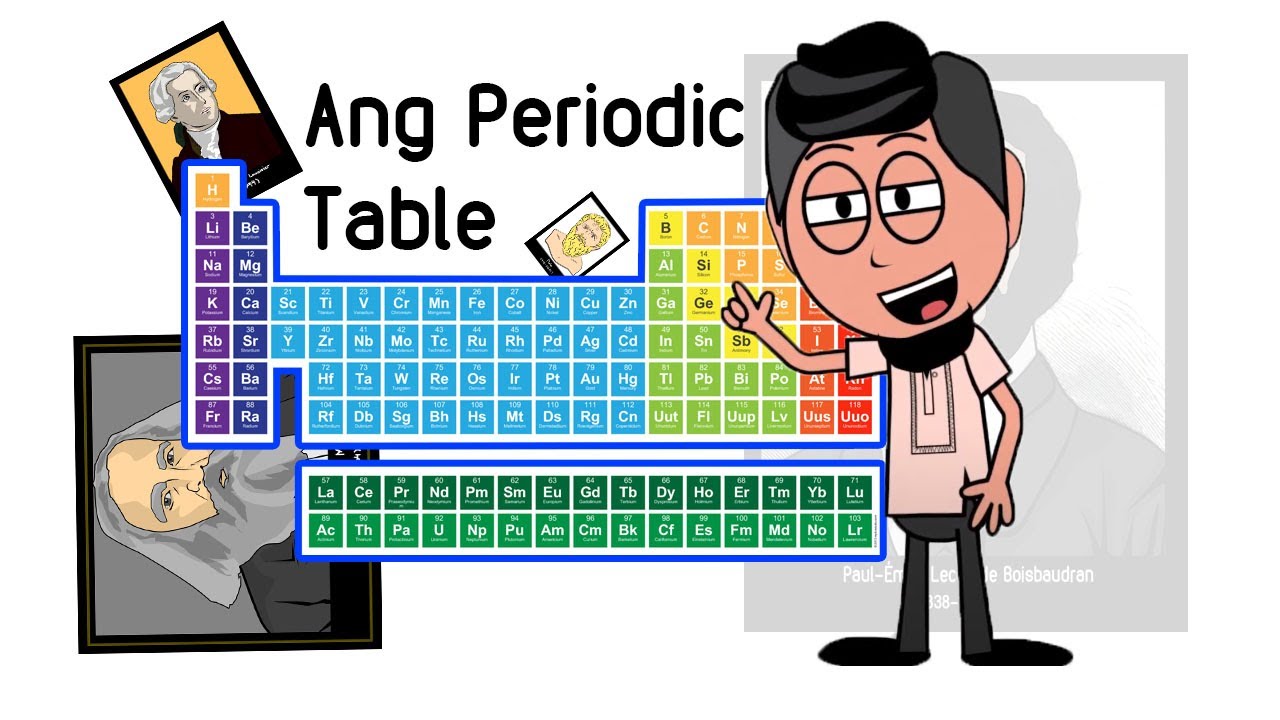The History of the Periodic Table
Summary
TLDRThis video script chronicles the fascinating journey of chemical element discovery, from Henning Brass's accidental phosphorus discovery in 1669 to the development of the periodic table by Dmitri Mendeleev in 1869. It highlights key scientific breakthroughs, including the identification of electrons, protons, and neutrons, the discovery of radioactivity, and the manipulation of atoms. The script also mentions the contributions of notable scientists like John Newland, Antoine Henri Becquerel, the Curies, and James Chadwick, showcasing the evolution of atomic theory and our understanding of the building blocks of matter.
Takeaways
- 🔬 In 1669, Henning Brass accidentally discovered phosphorus while attempting to create the philosopher's stone.
- 🌐 By 1809, 47 elements had been discovered, prompting scientists to search for more and understand their patterns.
- 🔍 In 1863, John Newland grouped 56 elements into 11 categories based on their properties.
- 📊 Dmitri Mendeleev's periodic table, developed in 1869, organized elements by atomic mass and predicted future discoveries.
- 📡 Antoine B. Hill's discovery of radioactivity in 1886 was a significant milestone in understanding atomic structure.
- 💡 Marie and Pierre Curie's work on uranium and thorium led to the discovery of radium and polonium, and the identification of beta particles as negatively charged.
- 🔋 Ernest Rutherford's research in 1897 led to the understanding that radioactivity is due to atomic breakdown.
- ⚛️ In 1911, Rutherford and Hans Geiger discovered electrons orbit the nucleus, a key concept in atomic theory.
- 🌀 Niels Bohr's model in 1913 proposed that electrons move in discrete energy levels, or orbitals, around the nucleus.
- 🧬 James Chadwick's discovery of neutrons in 1932, along with the identification of isotopes, completed the foundation for the modern periodic table.
- 🔬 The first artificial atom transmutation was achieved by Cockroft and Walton in 1932 by bombarding lithium with particles.
Q & A
What was Henning Brass's discovery in 1669 related to?
-Henning Brass, a German merchant and amateur alchemist, discovered phosphorus in 1669 while attempting to create a philosopher's stone that could turn metals into gold. He heated residues from boiled urine, and the liquid that dropped out burst into flames.
How many elements were known by 1809?
-By 1809, at least 47 elements had been discovered, leading scientists to start recognizing patterns in their characteristics.
What significant contribution did John Newland make to the organization of elements?
-In 1863, English chemist John Newland divided the then-discovered 56 elements into 11 groups based on their characteristics, which was a significant step towards the development of the periodic table.
Who is credited with the development of the periodic table, and what was his approach?
-Russian chemist Dmitri Mendeleev is credited with the development of the periodic table. He arranged chemical elements by atomic mass and predicted the discovery of other elements, leaving spaces open in his table for them.
What was the significance of Antoine B. Hill's discovery in 1886?
-French physicist Antoine B. Hill first discovered radioactivity in 1886, which was a pivotal moment in understanding atomic structure and behavior.
Which scientists are known for their work on the radiation of uranium and thorium, and what elements did they discover?
-Marie and Pierre Curie worked on the radiation of uranium and thorium and discovered radium and polonium.
What did Ernest Rutherford name, and what were the three types of radiation he identified?
-Ernest Rutherford named three types of radiation: alpha, beta, and gamma rays.
What did Sir William Ramsay and Lord Rayleigh discover in 1894?
-In 1894, Sir William Ramsay and Lord Rayleigh discovered the noble gases.
What was the significance of JJ Thompson's discovery in 1897?
-In 1897, English physicist JJ Thompson discovered electrons, which were small, negatively charged particles within an atom.
What did John Townsend and Robert Millikan determine about electrons?
-John Townsend and Robert Millikan determined the exact charge and mass of electrons.
What did Henry Moseley provide in 1913, and how did it contribute to the periodic table?
-In 1913, English physicist Henry Moseley provided atomic numbers based on the number of electrons in an atom, rather than based on atomic mass, which provided a more accurate basis for the periodic table.
Who discovered neutrons, and what was the significance of this discovery for the periodic table?
-James Chadwick first discovered neutrons in 1932, and isotopes were also identified around the same time, providing a complete basis for the periodic table.
What milestone did Cockroft and Walton achieve in 1932 regarding atomic manipulation?
-In 1932, Englishman Cockroft and the Irishman Walton first split an atom by bombarding lithium in a particle accelerator, changing it into two helium nuclei.
Outlines

Cette section est réservée aux utilisateurs payants. Améliorez votre compte pour accéder à cette section.
Améliorer maintenantMindmap

Cette section est réservée aux utilisateurs payants. Améliorez votre compte pour accéder à cette section.
Améliorer maintenantKeywords

Cette section est réservée aux utilisateurs payants. Améliorez votre compte pour accéder à cette section.
Améliorer maintenantHighlights

Cette section est réservée aux utilisateurs payants. Améliorez votre compte pour accéder à cette section.
Améliorer maintenantTranscripts

Cette section est réservée aux utilisateurs payants. Améliorez votre compte pour accéder à cette section.
Améliorer maintenant5.0 / 5 (0 votes)






